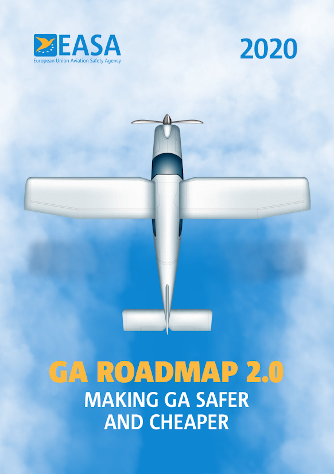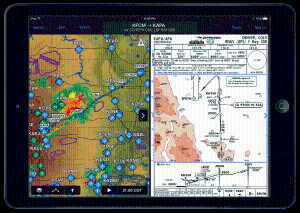
|
|
|
The IAOPA Europe newsletter is sent out approximately every second month keeping you up-to-date about General Aviation in Europe.
Your privacy of course is guaranteed and you can unsubscribe anytime with one click on the unsubscribe link in the newsletter.
For older editions of IAOPA Europe Enews please click here to visit our newsletter archive
For older editions of IAOPA Europe Enews please click here to visit our newsletter archive
For older editions of IAOPA Europe Enews please click here to visit our newsletter archive
For older editions of IAOPA Europe Enews please click here to visit our newsletter archive
For older editions of IAOPA Europe Enews please click here to visit our newsletter archive
For older editions of IAOPA Europe Enews please click here to visit our newsletter archive
Take a look at the upper right corner of this webpage and just enter your email to sign up to receive the IAOPA Europe Enewsletter. Every second month you will then receive our Enewsletter keeping you up-to-date about General Aviation in Europe.
Your privacy of course is guaranteed and you can unsubscribe anytime with one click on the unsubscribe link in the newsletter.
|
April issue of the UK AOPA Magazine is out
|
Download as a PDF for offline reading
For older editions of the UK AOPA Magazine please visit the archive |
|
15 Percent Discount on most Jeppesen products and services for AOPA members in Europe
|
Thanks to a recent agreement between Jeppesen and IAOPA Europe, members of all European AOPAs can now take advantage of a 15% discount on several of Jeppesen’s most popular products and services (both initial subscriptions and renewals): · Paper Charts · Electronic Charts · iPad Apps · Jeppesen databases (Garmin 430/530, GTN series, Garmin 1000 etc) · EASA Training Products Members in the following countries can already now contact Jeppesen directly to take advantage of the offer using their AOPA membership number: Cyprus, Denmark, Estonia, Finland, Germany, Netherlands, Norway, Poland, Russia, Sweden & Switzerland. Members in other countries should first check up with their national AOPA to make use of the offer. |
|
NCC-Light Template manual
|
IAOPA Europe is happy to finally make available a template for an NCC Operations Manual which is written from the ground up with the intent of fulfilling all relevant requirements in Part-NCC and Part-ORO in a simple way that is suitable for the very small NCC operator with maybe 2-3 persons involved in the flight operation.
Through an extensive use of references to relevant regulation and appendices the core Operations Manual is kept down to around 20 pages. Further, the most common variable items are all listed in the "Operator's Reference" section at the beginning of the manual. This should make the implementation quite an achievable task even for a small NCC operator.
The manual at this stage is not yet endorsed by any authorities and as such comes without any guarantees. It is provided free of charge, but if your organization finds it useful please consider a donation marked “NCC Light” to:
IAOPA Europe, Rabobank Roosendaal
Bank Account No.: 1843.98.789
Swiftcode: RABONL2U
IBAN: NL33RABO0184398789
For questions or comments, please contact the IAOPA Europe NCC Competency Team at iaopa@iaopa.eu
For larger corporate operators please refer to the more extensive NCC Ops manual that was previously released and can be found just below.
|
|
Template OPS manual for larger operators of Complex Aircraft
|
As of August 25'th 2016 all operators of complex aircraft in Europe will be required to comply with the new Part-NCC requirements. IAOPA has from the beginning worked to exclude particularly the very small operators from these requirements since they are not suited for a small organisation with maybe just one or two persons involved in the operation. Recently the EASA Committee has decided in favour of excluding turboprop aircraft with a MTOW of less than 5700kg. Operators of these aircraft will therefore NOT be required to submit a declaration and associated requirements for a management system and OPS manual. For an overview of the requirements for operators of Non Complex Aircraft please consult the dedicated NCC page at the EASA website. In order to assist those operators who are still subject to the new requirements IAOPA has together with EASA, national aviation authorities, ERAC and other Industry representatives worked to develop a template manual. This can be freely downloaded and modified by the operator. The template manual has been developed with a medium-sized NCC operator in mind. Work is still ongoing to also present a manual which is more tailored to the very small operator. To download the template NCC manual please click here Please note that you will have to work through the template and adjust so that it suits your operation. Also note that for a non-commercial operator your OPS manual does not have to be approved by your aviation autority. In fact you are not even required to submit it when you file your NCC declaration. However, you must have it available and be able to show compliance when you have an audit inspection from your authority. The template manual is build on the principle that it includes more than what is required for most operators. It should therefore be possible to shorten it down considerably when you work your way through it and adapt it to your operation. Be sure to remove sections and procedures which do not apply to your operation so that the manual describes the way you actually operate. Otherwise you are making your first compliance audit harder than it needs to be. The manuals are made available free of charge but financial contributions to support IAOPAs European activities will be much appreciated. Please contact iaopa@iaopa.eu for details.
|



